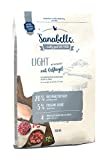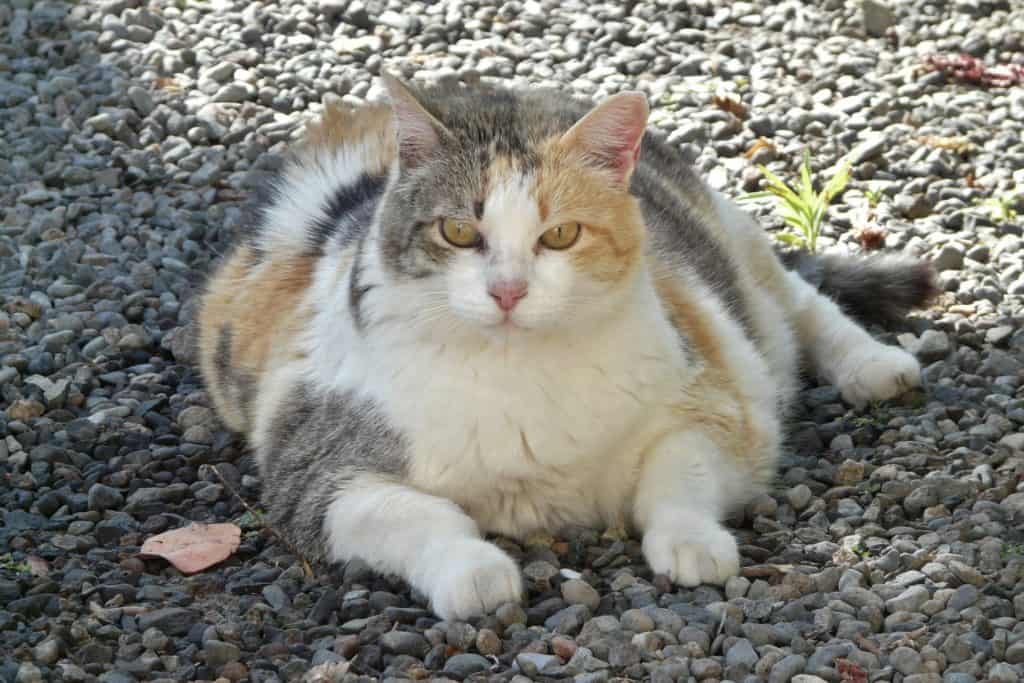The Veterinary Association says that more than forty per cent of our cats are overweight. Obesity has health consequences. Reason enough to deal with this issue thoroughly. We will tell you how to detect obesity in your cat and how to avoid it. This way your cat stays fit and healthy.
When are cats overweight?
A cat is considered overweight if its body weight exceeds the ideal weight by 15 percent.
If veterinarians want to detect weight problems in cats, they apply the Body Condition Score (BCS). They evaluate each cat according to its characteristics and classify it into one of five groups. These range from category one, which describes cats with severe underweight, to category five for cats with obesity. Category four includes all overweight cats that are not obese. Classes three to five are defined in the list as:
Ideal weight
Cats with ideal weight have overall good proportions and a visible waist. Your ribs are not visible, but can be easily touched under a small layer of fat. Your abdominal fat is moderate.
Overweight
If cats are overweight, the ribs are much harder to feel. Her waist is hard to tell and her abdominal circumference is enlarged. The fat layer on the backbone, chest and tail base is easy to feel.
Obesity
Cats suffering from obesity do not have a visible waist. Easily recognizable deposits of fat are spread throughout the body. The ribs are hardly to not touch. The abdominal circumference is greatly enlarged.
What are the causes of obesity in cats?
Simply put, an overweight occurs when the cat consumes more weight over its food than it consumes.
Several factors further support this process:
- Age:
Older cats move less than younger ones. As a result, they need less energy. This can be counteracted by a senior food that contains less energy with the same amount of food. - Lack:
Lack of exercise often occurs in cats from pure housing. Here it makes sense to create incentives for the cat to move. This can be done by movement parcours in the apartment. - Sex:
Hangovers are more likely to be overweight like females. - Castration:
Castration changes metabolism. Feelings of hunger can occur. Castrates move less to this. - Diseases:
Joint pain caused by illness leads to limited movement. In addition, metabolic diseases and medications are often linked to weight gain. - Race:
Some breeds are more prone to being overweight and obese than others. - Overfeeding:
Overfeeding is the most common cause of obesity in cats. In this case, a dietary change is useful.
What are the health risks associated with being overweight?
Unfortunately, if cats are overweight, this is not just an aesthetic problem. Being overweight leads to illness and thus limits the risk to your cat’s life.
Below are a number of typical diseases, often due to obesity:
- Respiratory diseases
- Urinary tract diseases
- Intervertebral disc problems
- Cardiovascular problems
- Fatty liver syndrome (hepatic lipidosis)
- Blockages
- Hip joint changes
- Diabetes (diabetes mellitus)
- Joint diseases (e.g. osteoarthritis)
Obesity in cats makes treatment difficult by the veterinarian. It increases the risk of anesthesia and has a negative effect on the natural defences.
What can you do if your cat is overweight?
Cats with overweight or obesity often suffer from diseases and generally do not feel comfortable. It is therefore necessary for the Stubentiger to free himself from his excessive pounds. For this, he puts in a diet.
The market has a number of supportive feed varieties. It is best to consult with a veterinarian on which food you are taking. This also tells you how much of the food your cat needs every day.
Light food
Manufacturers use the term “light” to refer to the lowest-calorie feed in a product series. The calorie content here is quite different. Since the term is not protected, this feed is often not suitable for reliable weight loss. It should be given as a preventive measure to prevent weight gain, for example after castration.
Diet food for cats
The term “diet food” is protected by law. Therefore, the feed must meet well-defined quality criteria. What is indicated on the package and which indication it may be given is regulated by an EU directive.

A good diet feed provides about 15 to 25 percent less energy than ordinary cat food. At the same time, it contains more vitamins,
Minerals and trace elements. These prevent nutrient deficiencies during a reduction diet.
Due to its ideally matched composition, the food is better suited for a diet than ordinary cat food.
You get the diet food from the vet. Use it to provide your cat with all the essential foods during the diet.
Don’t just give less food. This is how you take the risk of inadequately caring for the cat.
Don’t just let them starve. This carries the risk of a dangerous protein deficiency, which can lead to life-threatening liver fattening.
What else can you do to keep your cat slim?
Even if it’s hard. There are a few things you should keep in mind with your cat to keep it slim and healthy:
Diet
Make a diet plan and stick to it. If necessary, ask your veterinarian for assistance.
Food leftovers off the table
Do not give your cat any leftover food from the table. These do not correspond to the ideal food composition of the cat. Therefore, it favours shortages as well as excessive weight. Use the calories to provide the cat with all the nutrients.
Delicious
Give your cat little extra treats. Reward them with petting and attention. If you use treats, deduct the calories from the feed daily ration.
Movement
Spur your cat to move. Use the natural hunting instinct of your kitty. Effectively are cat toys in which they hunt an imitated prey animal. This is fun for the cat and breaks down a lot of calories.
